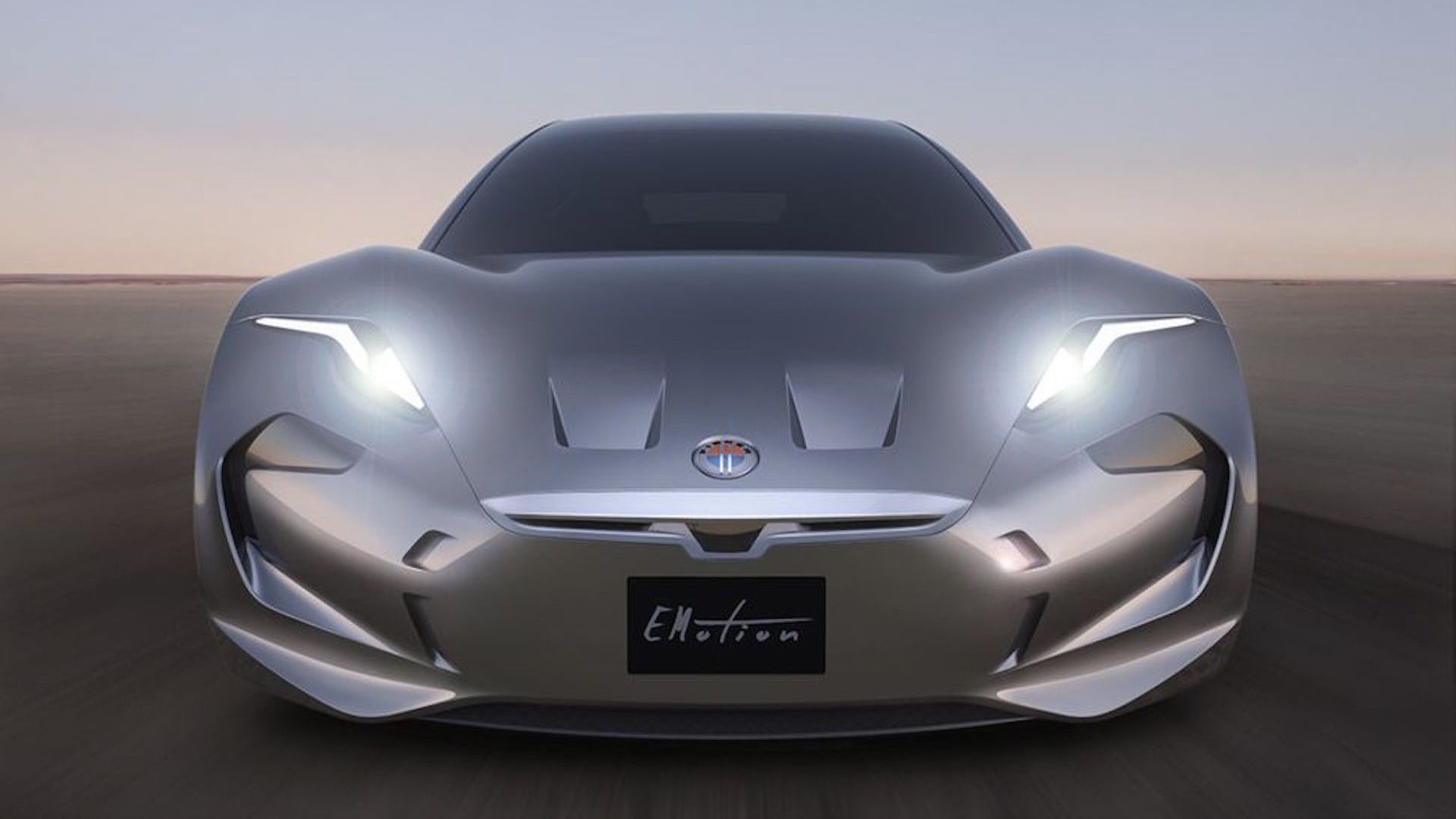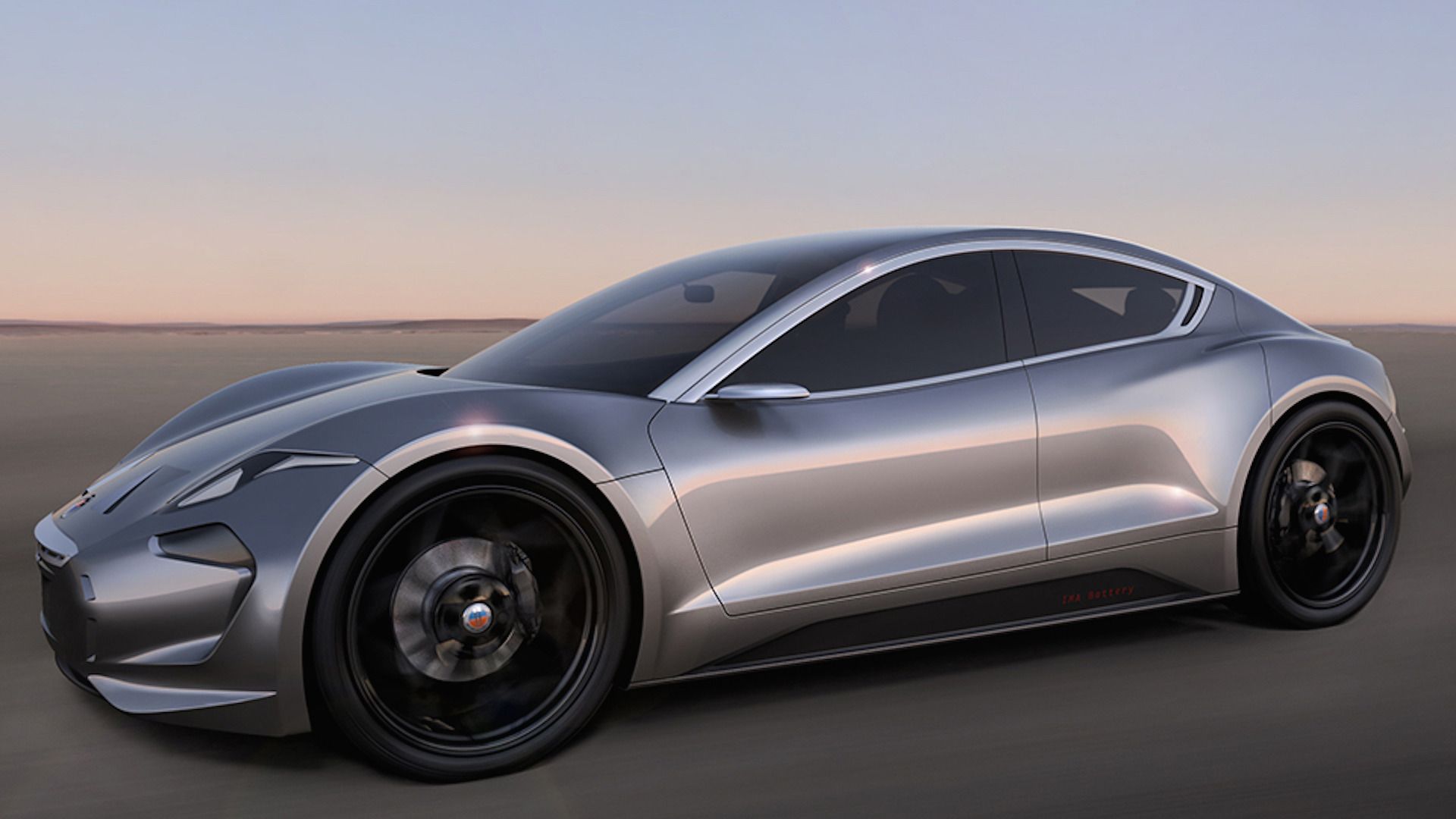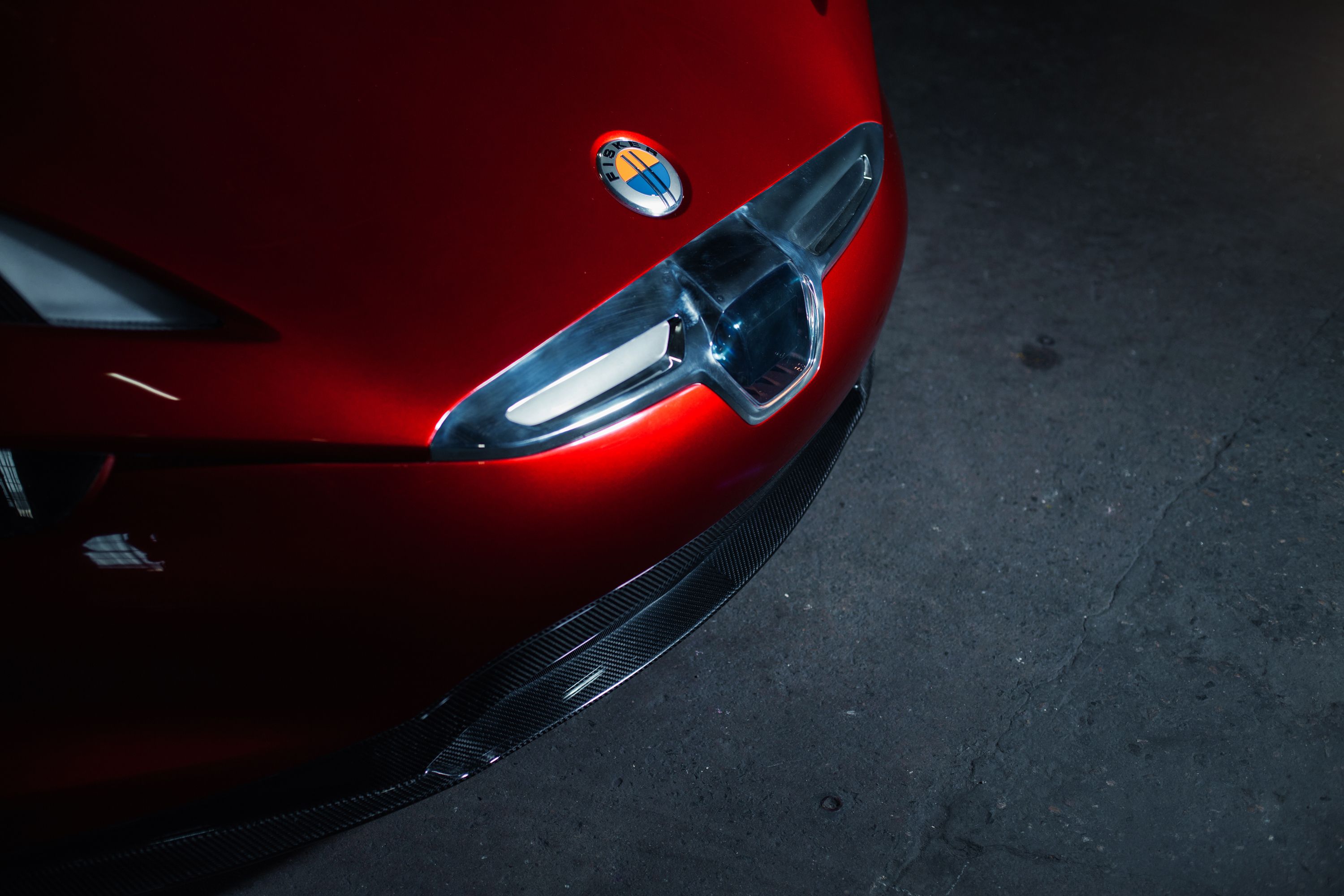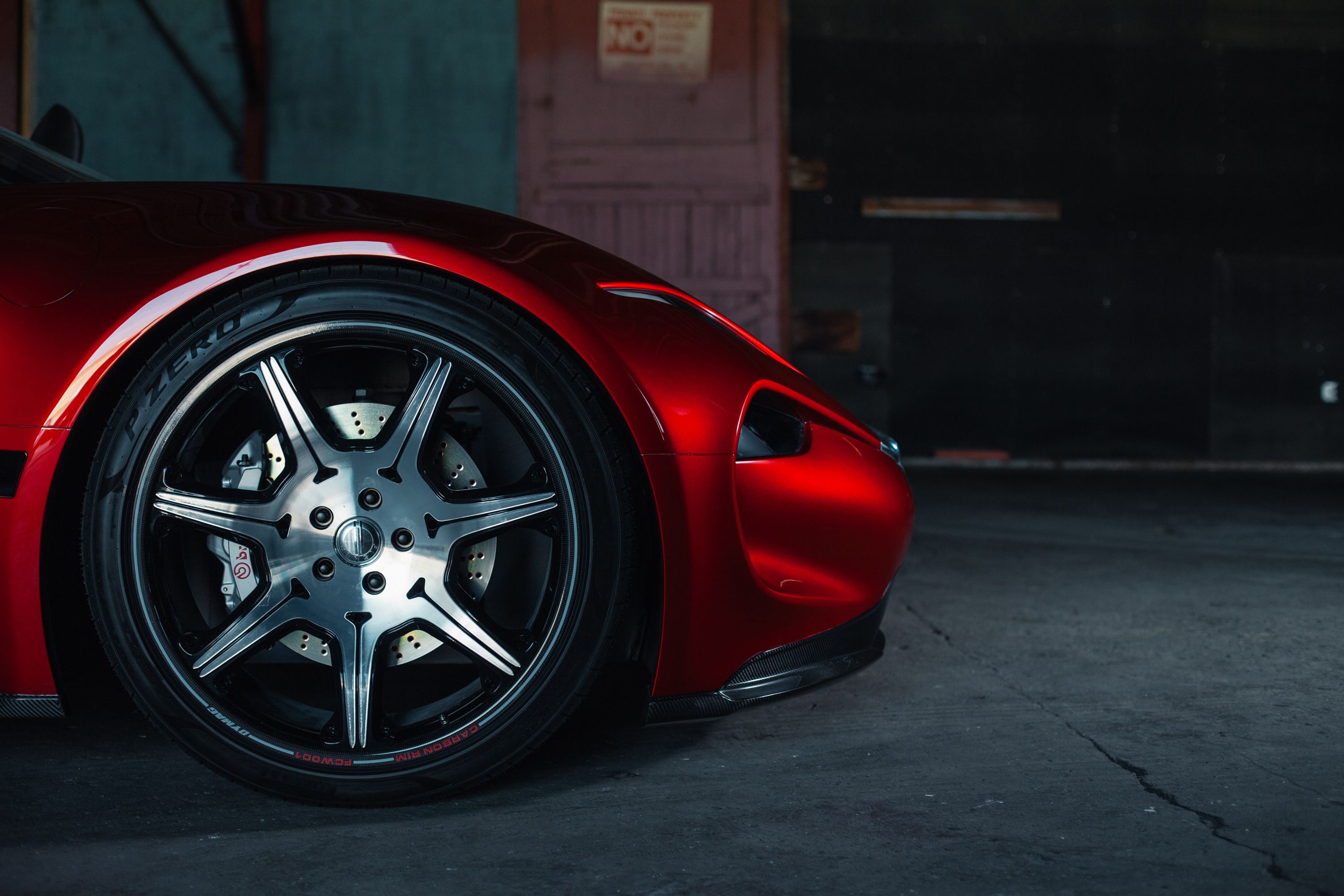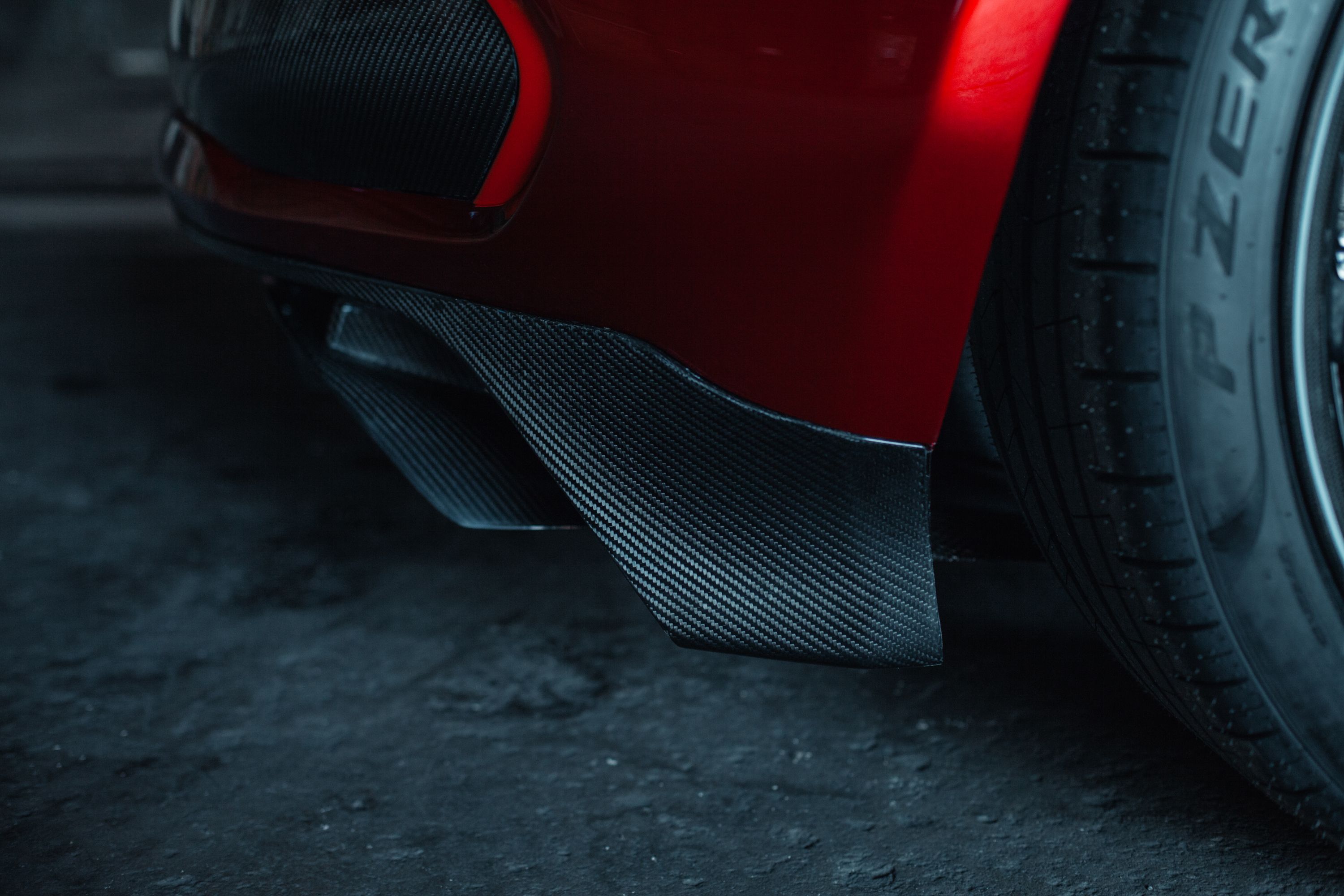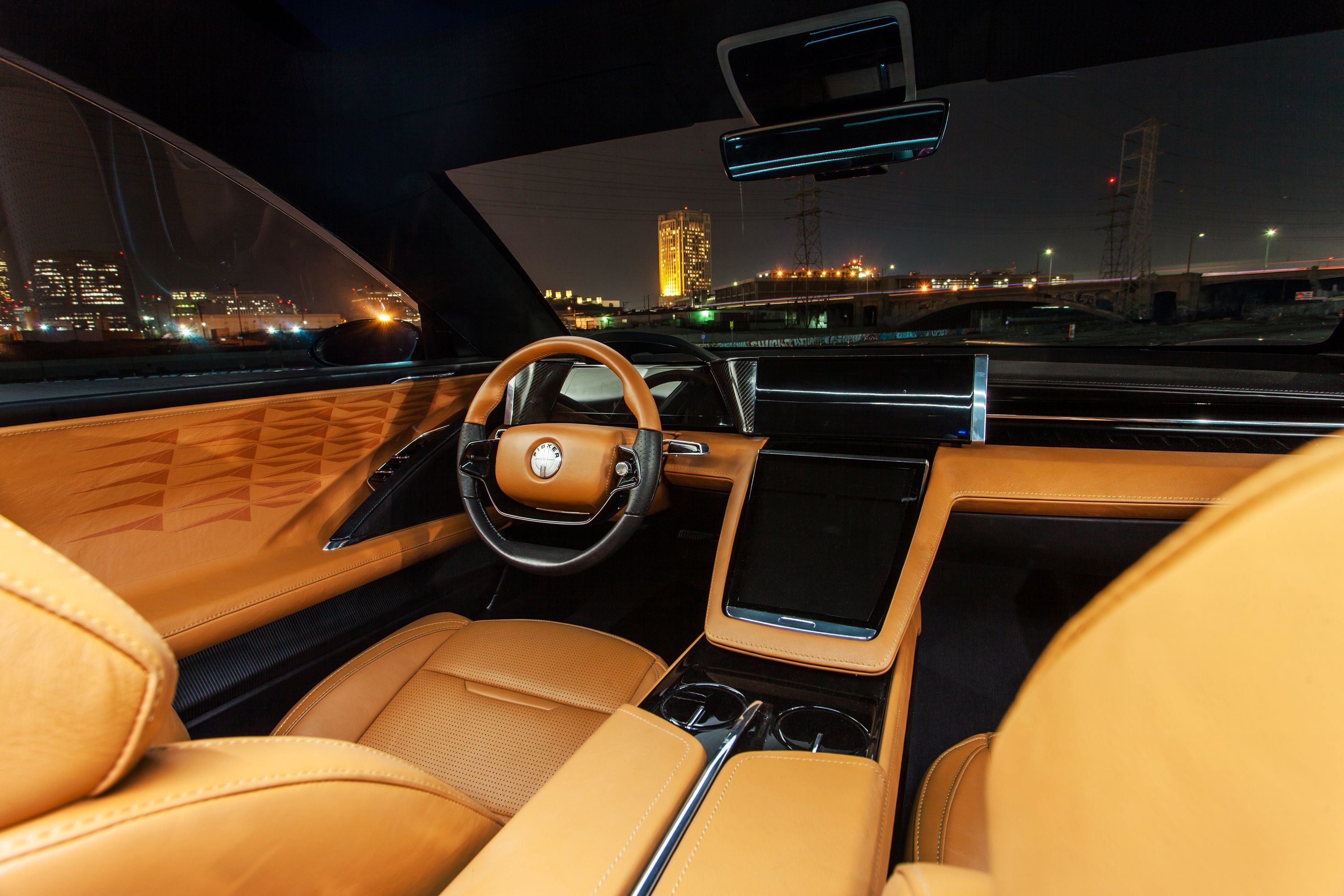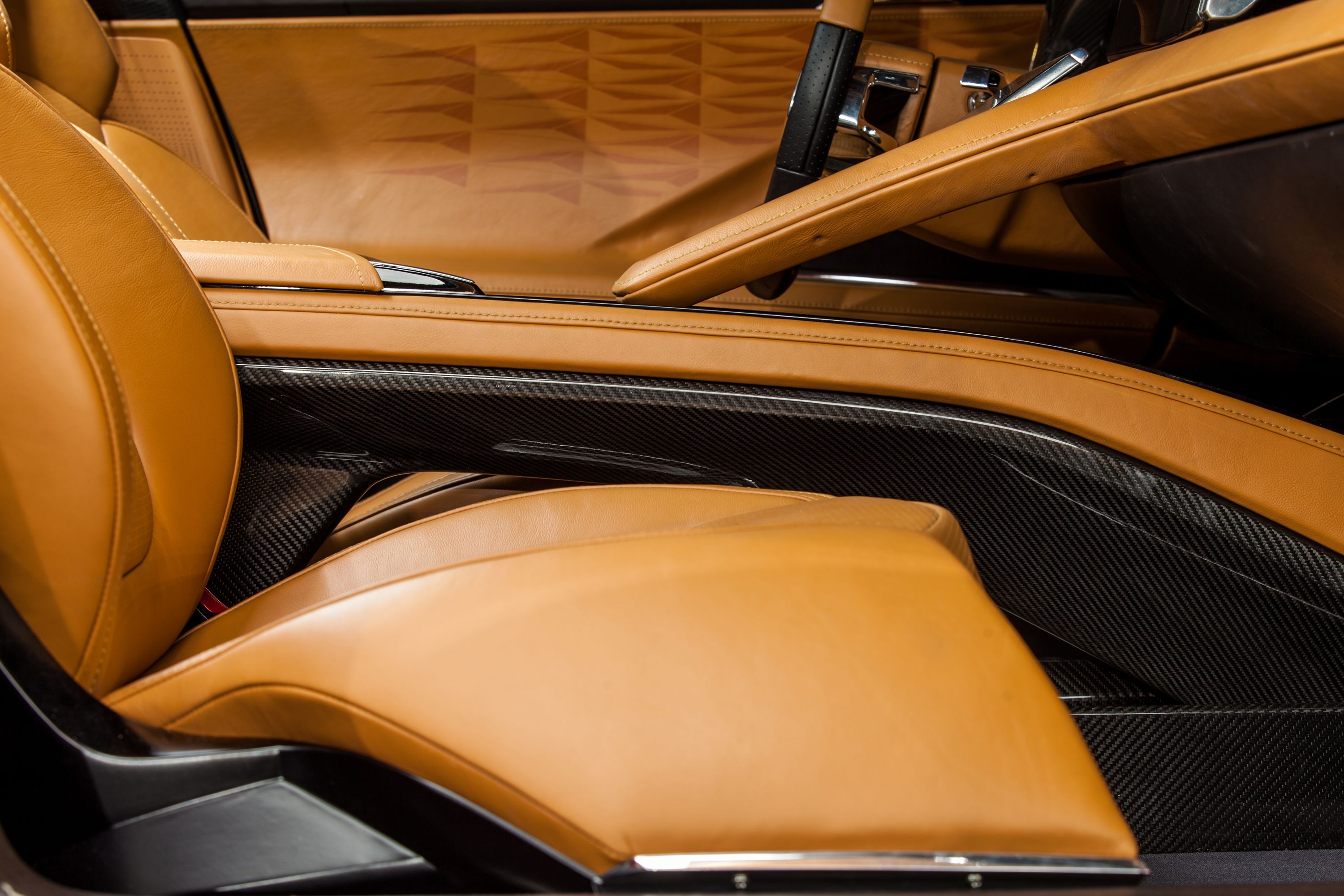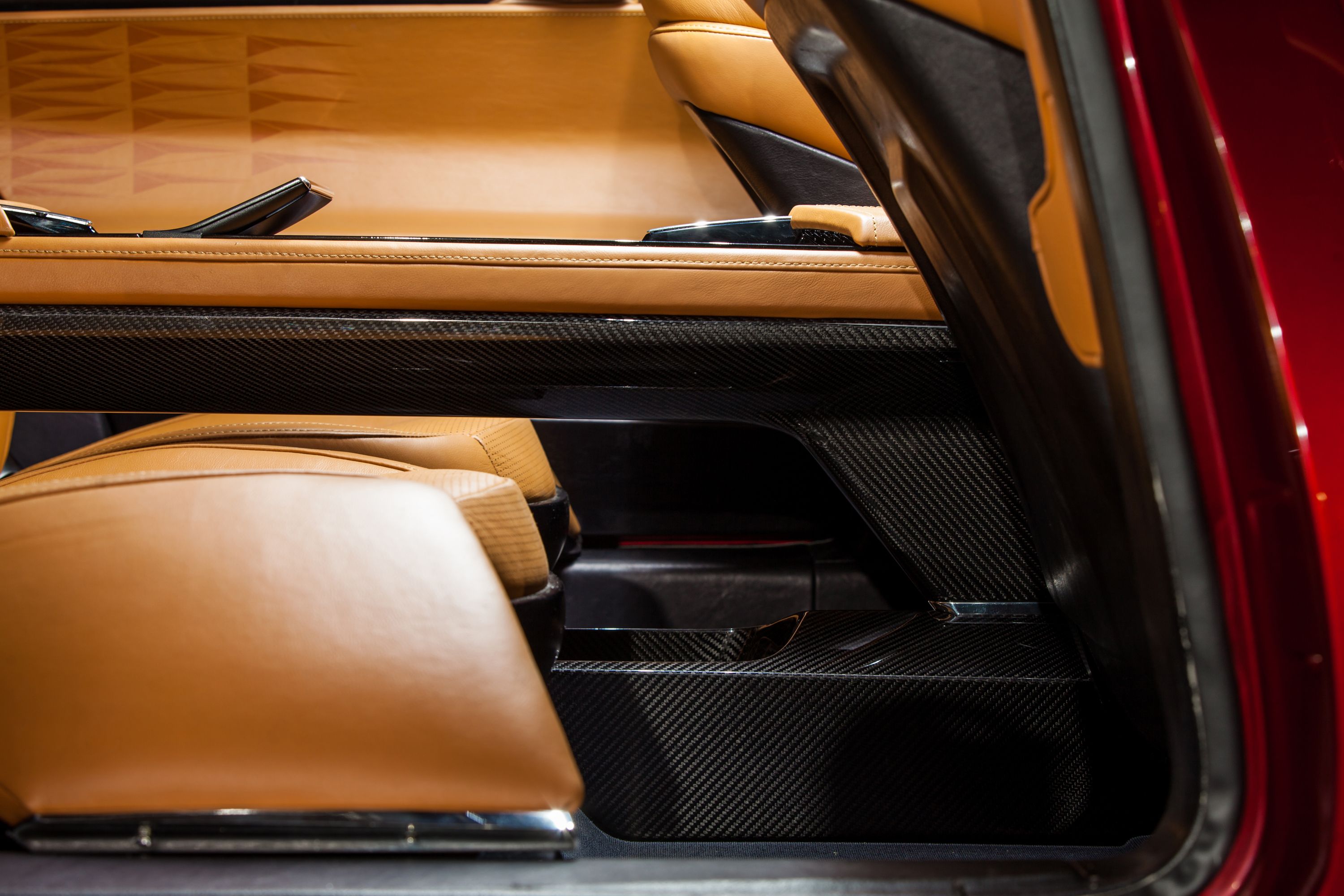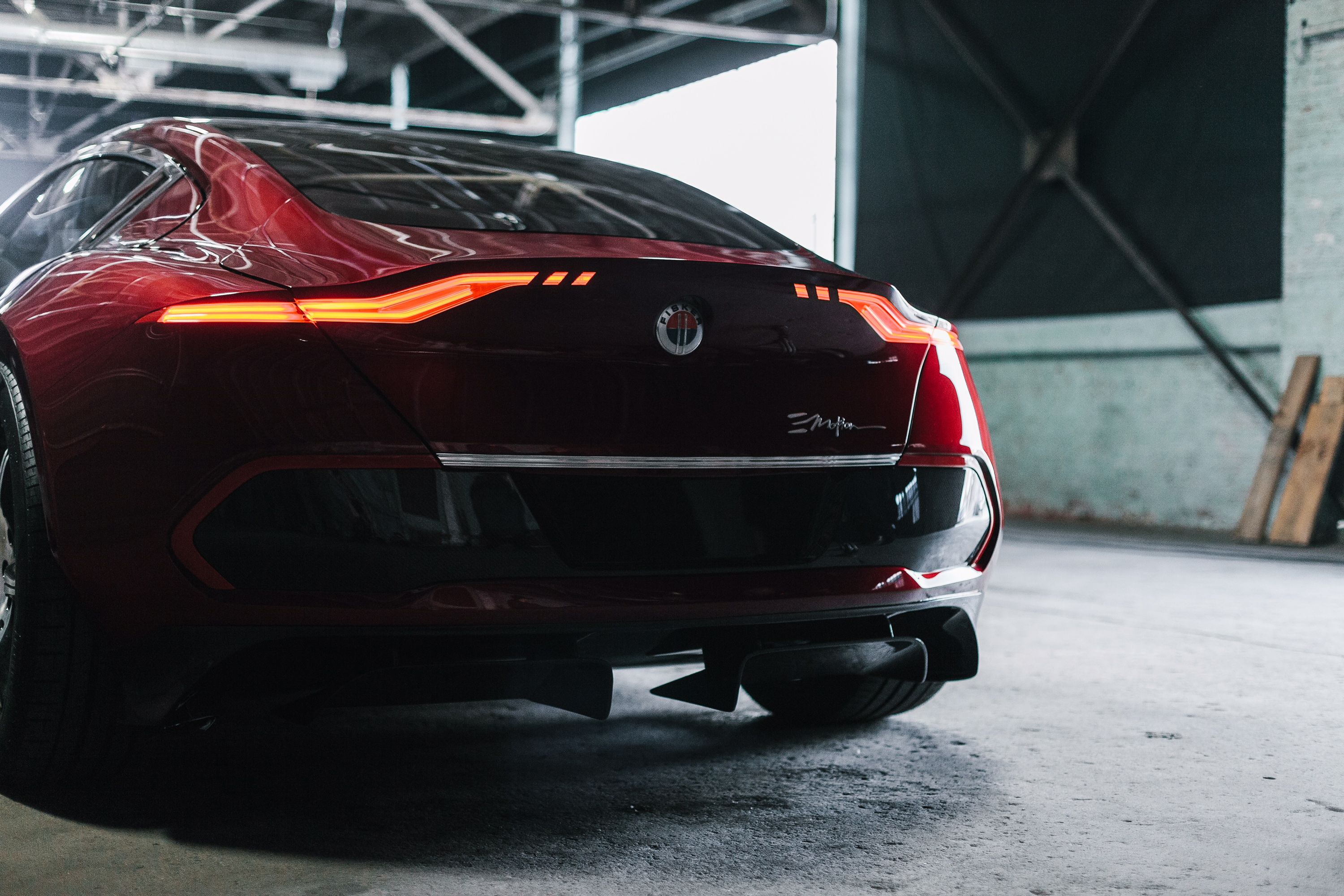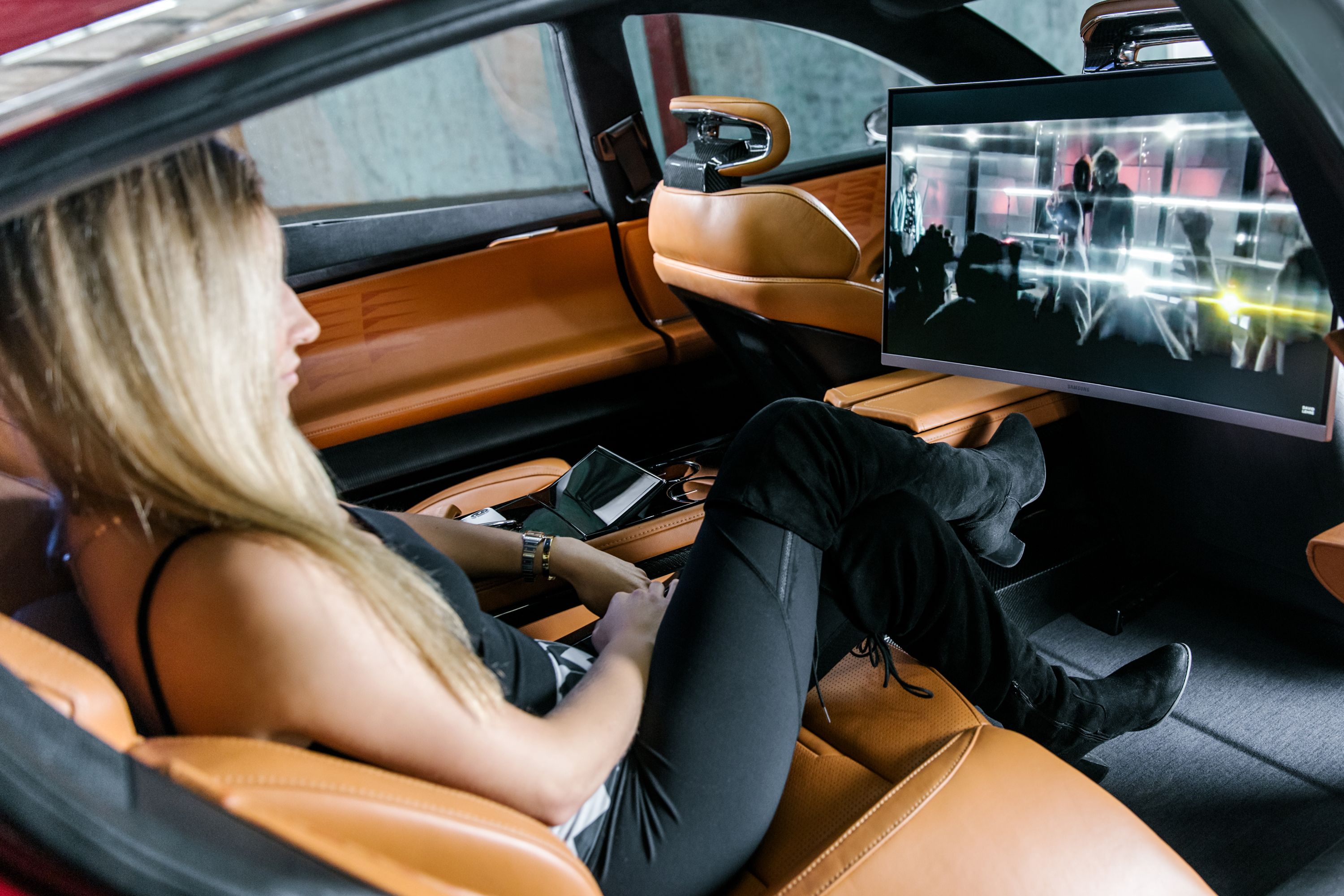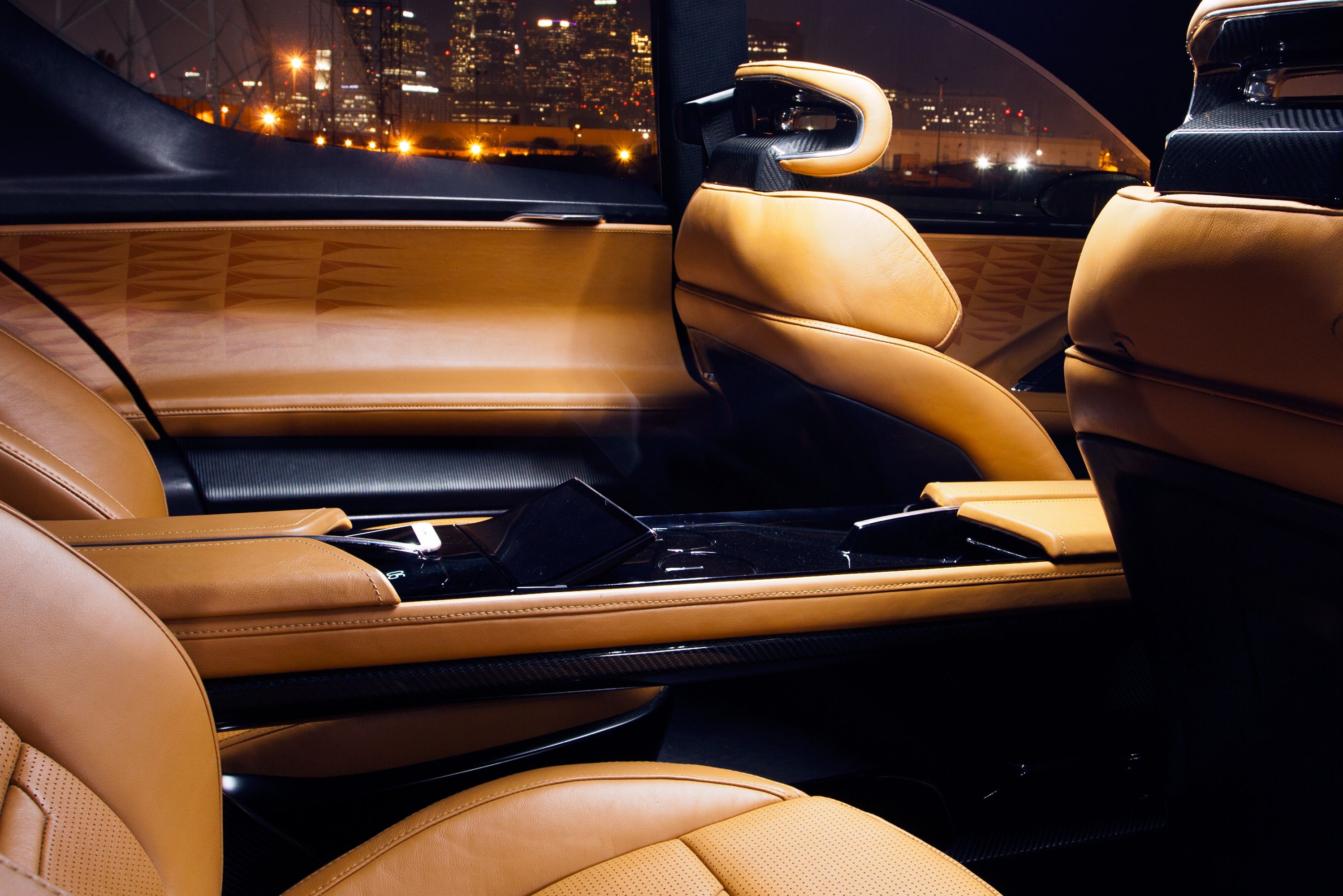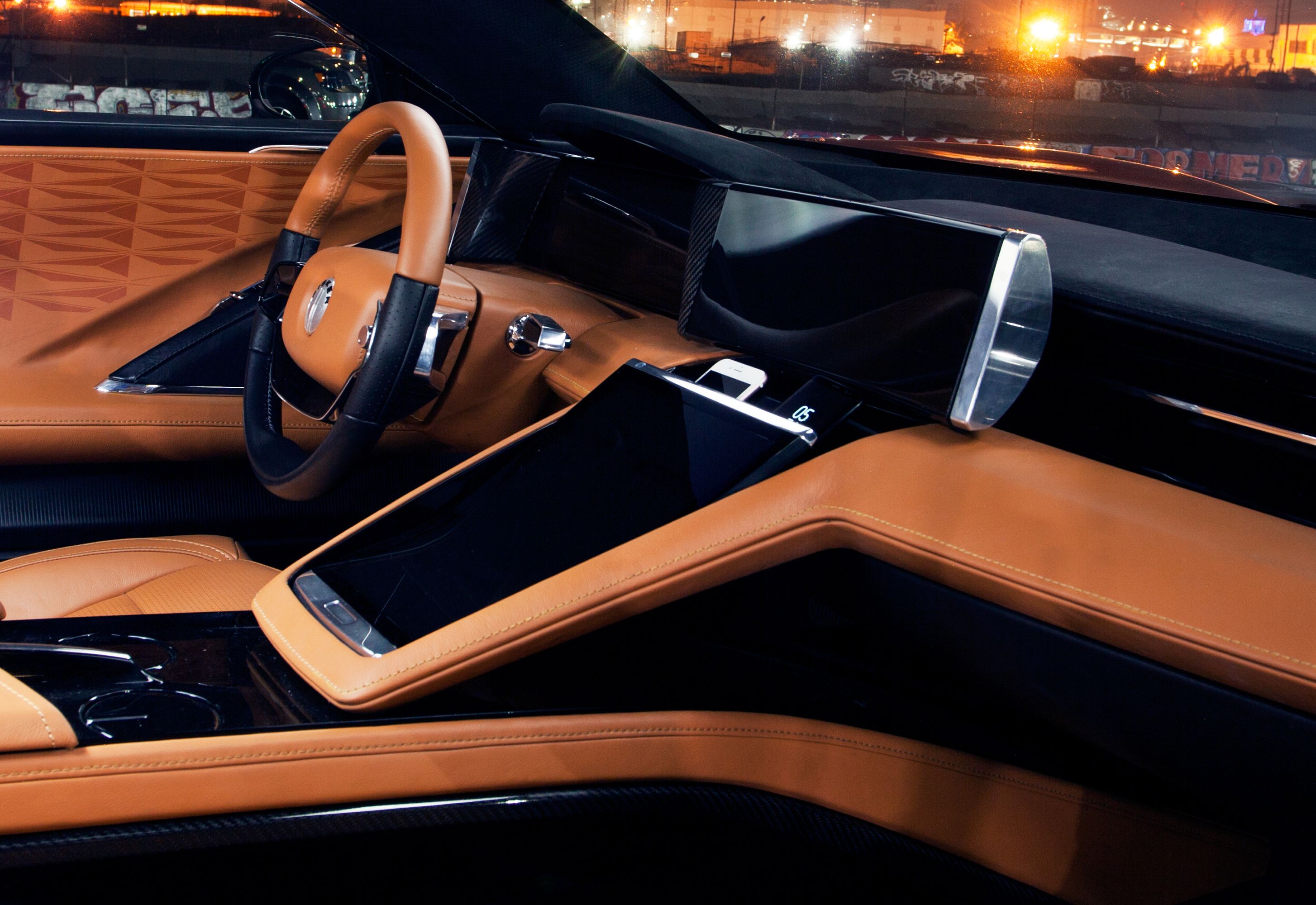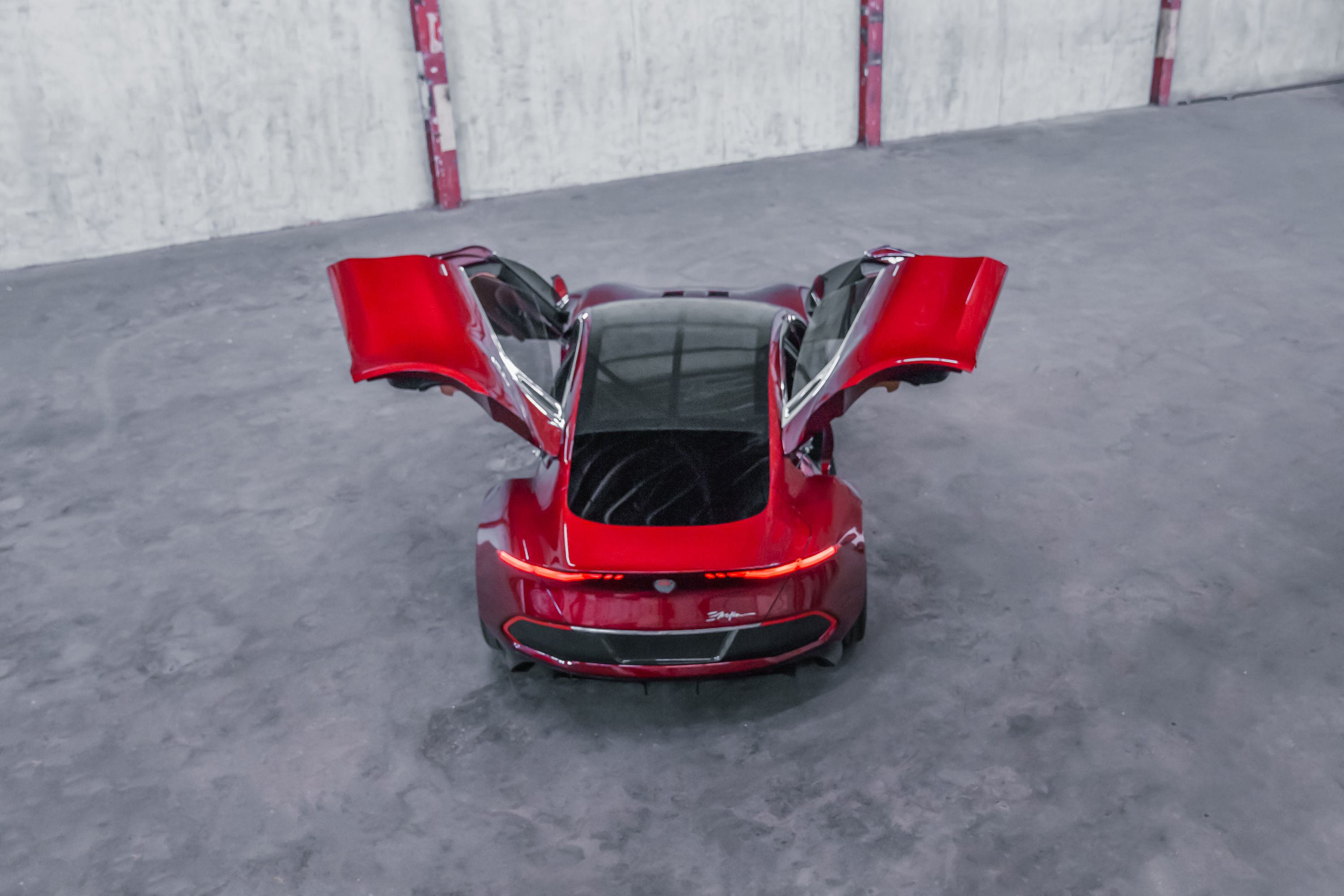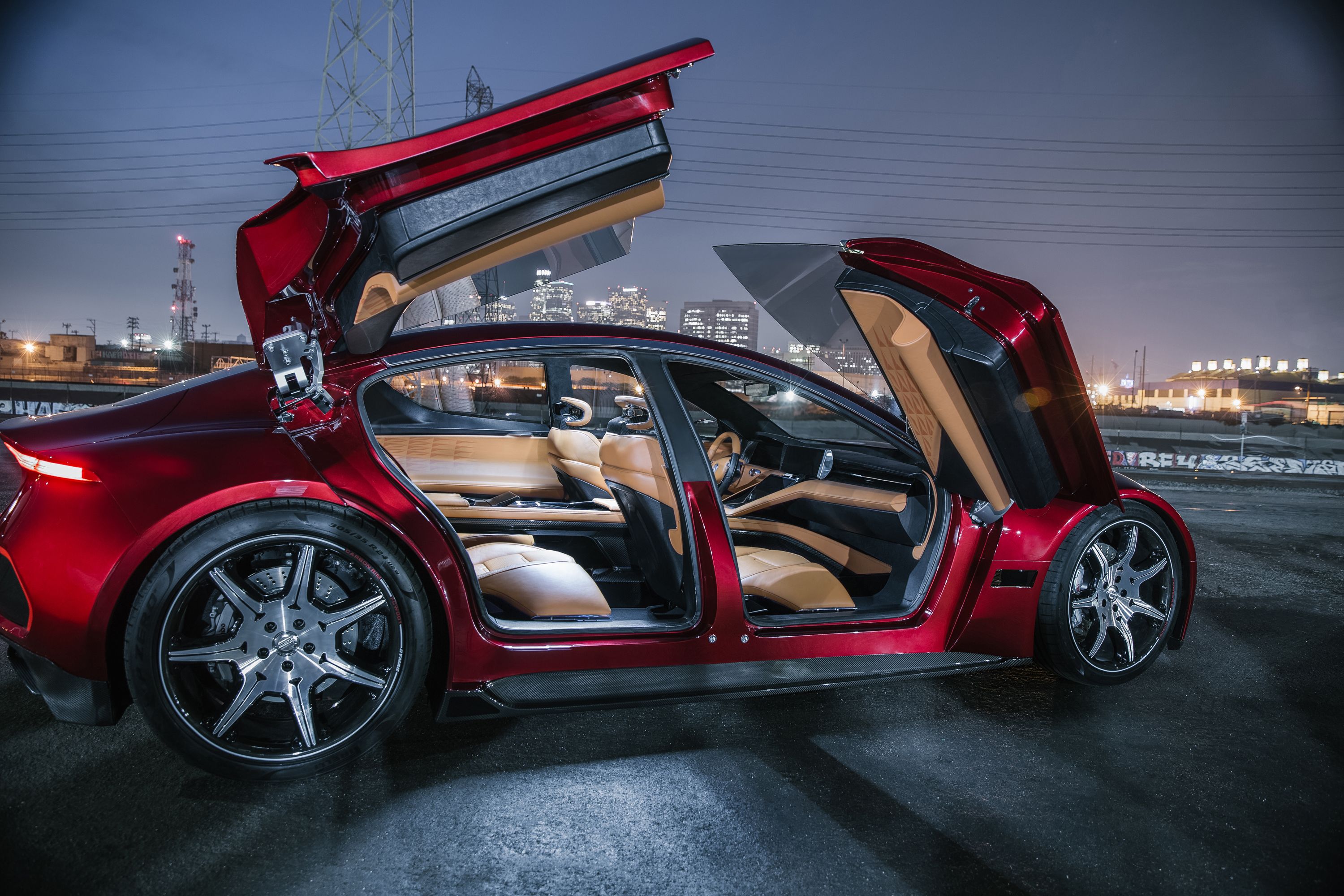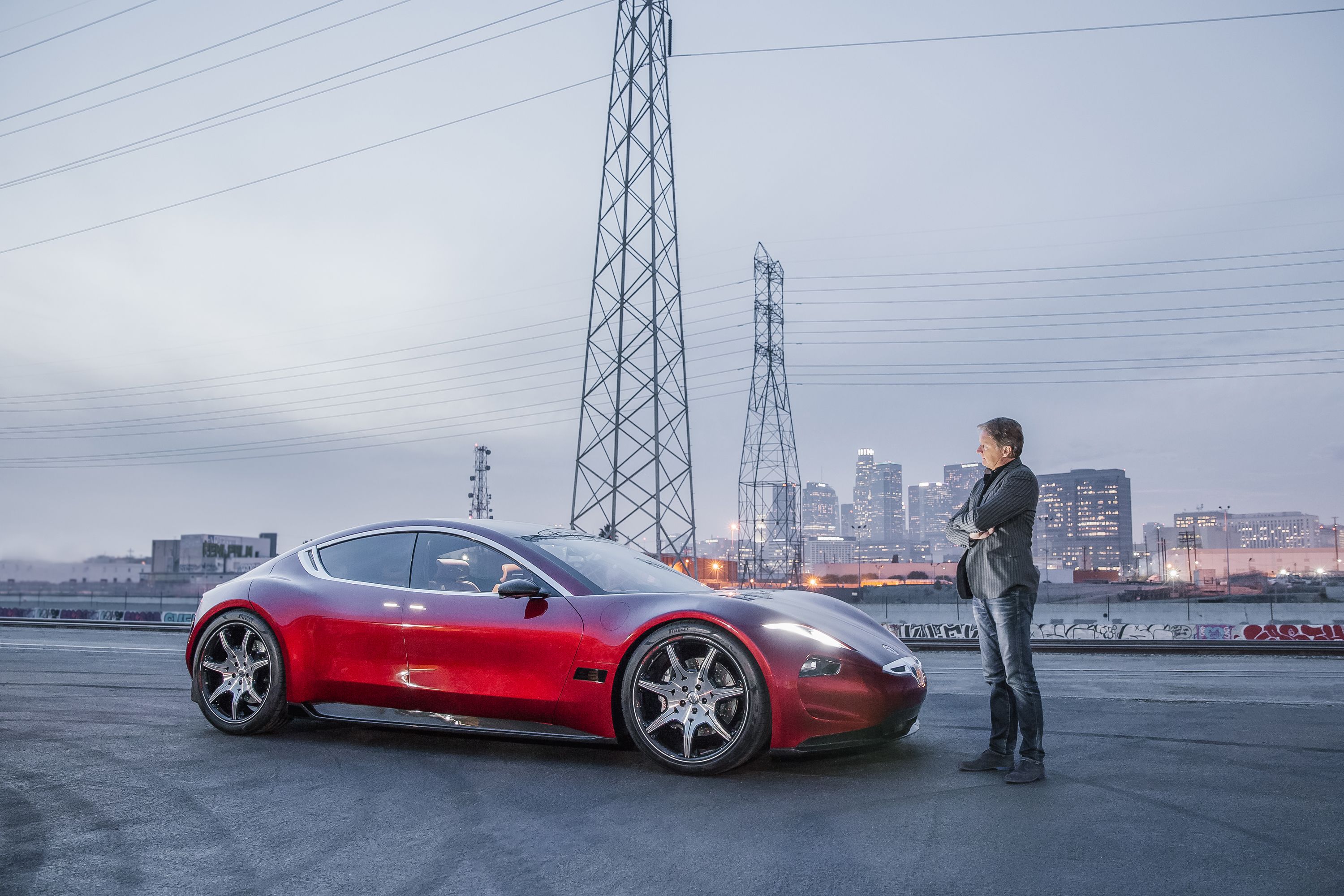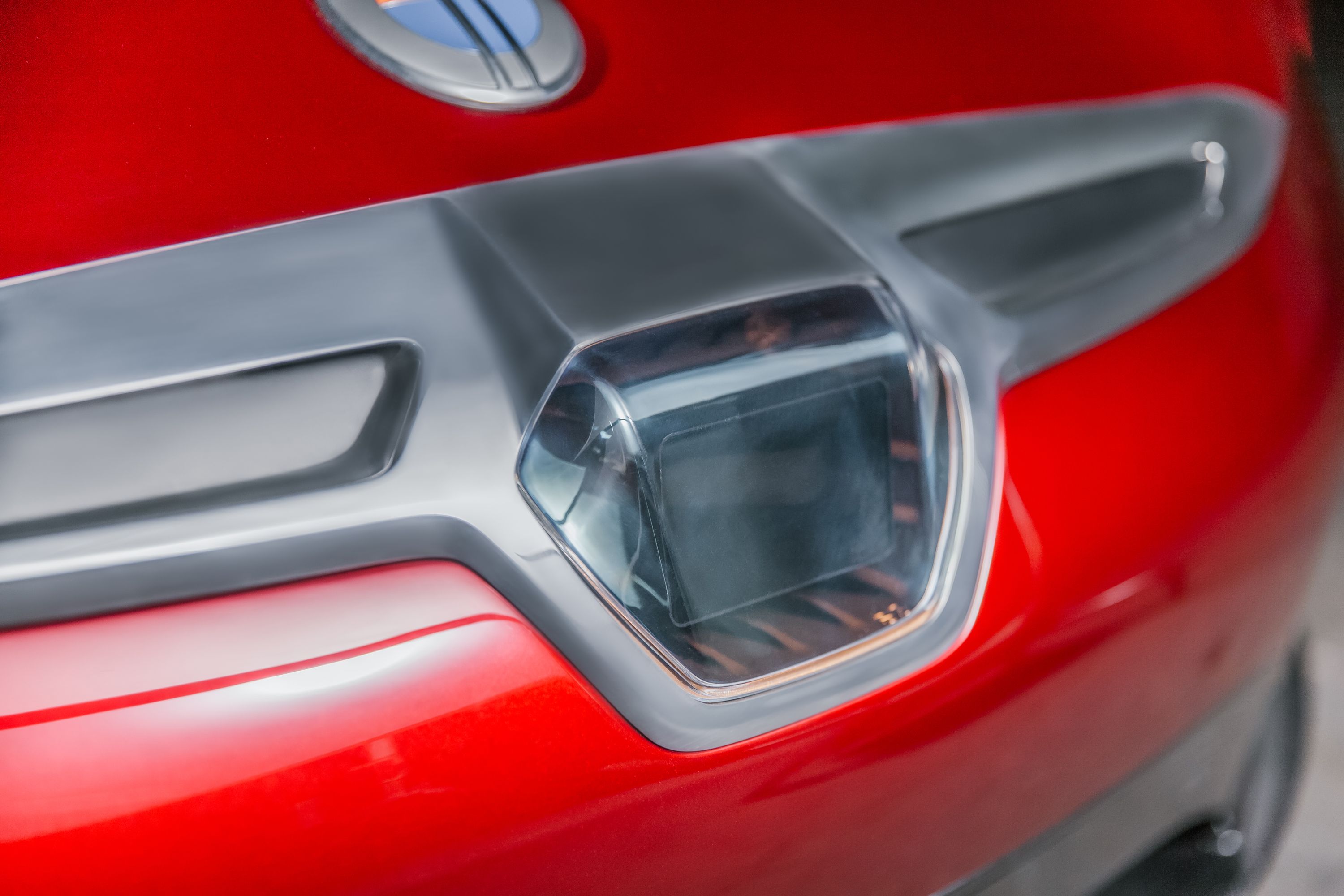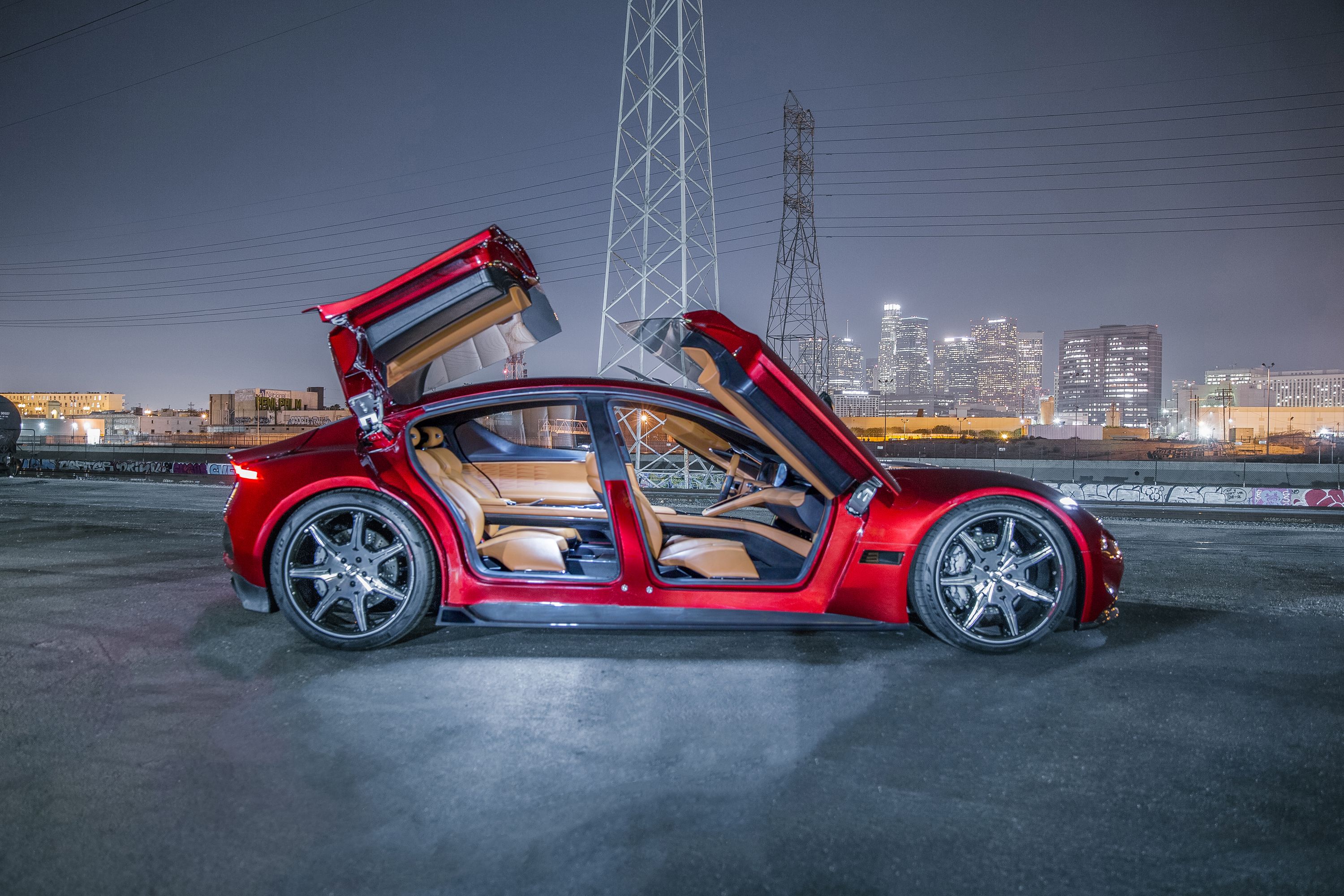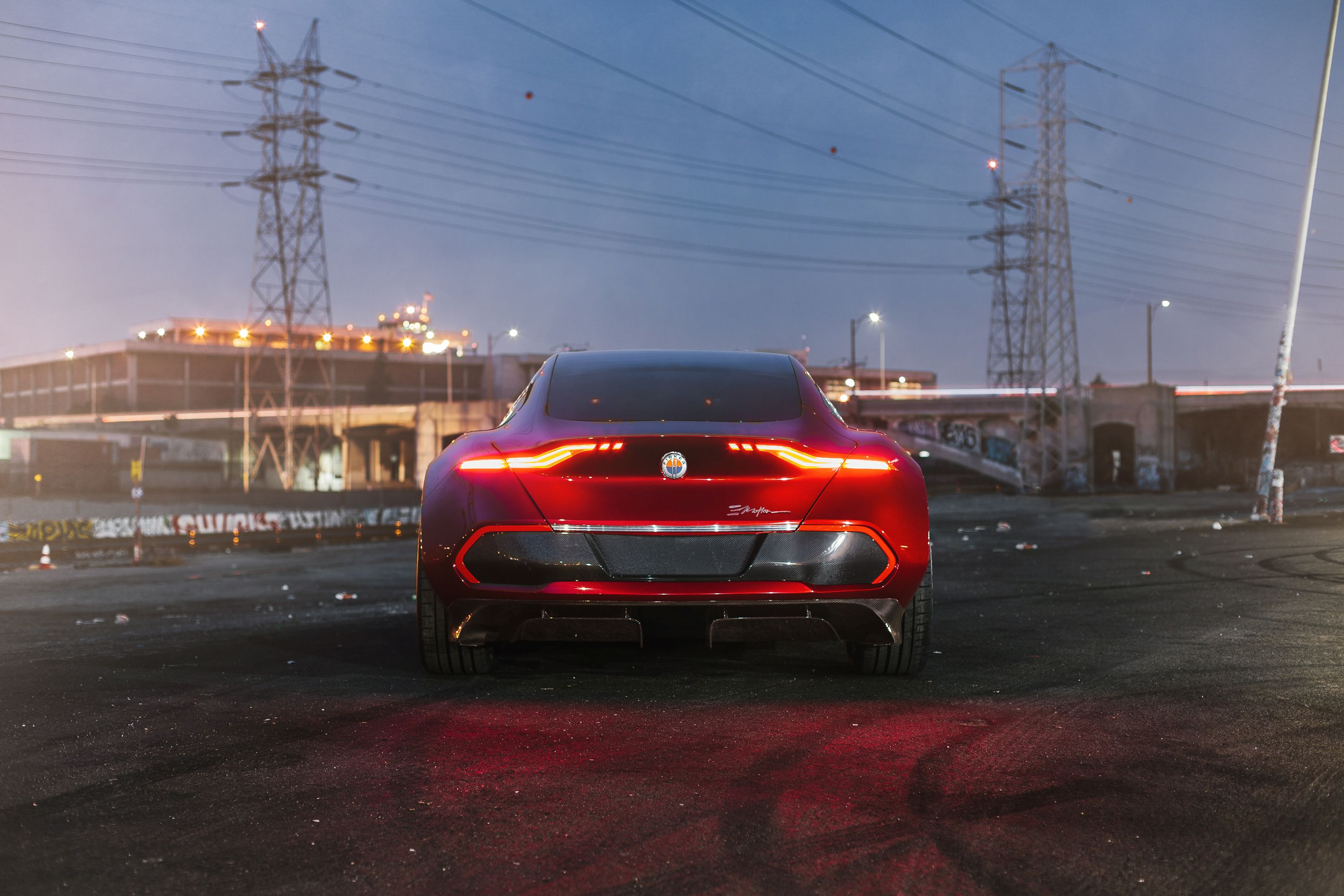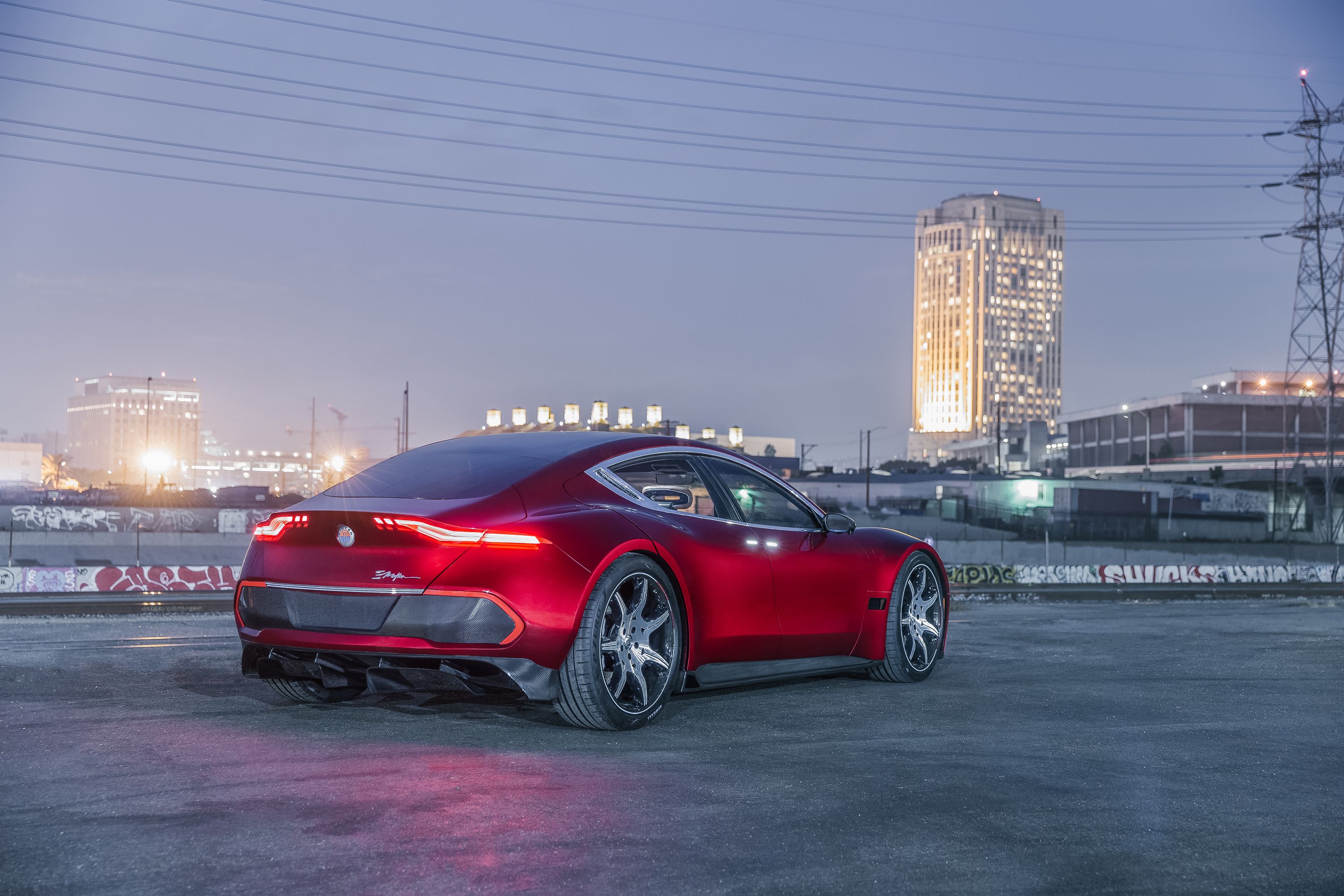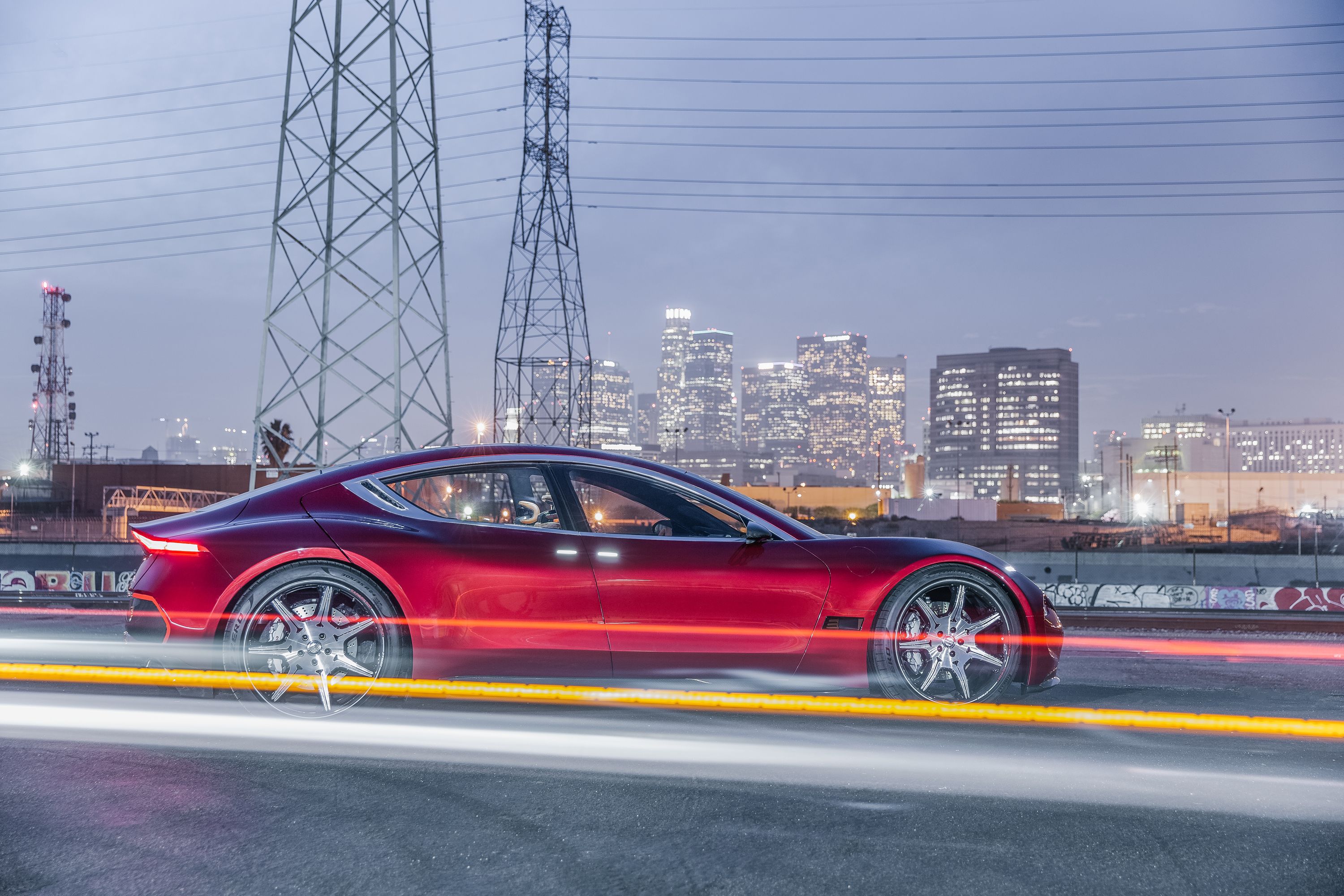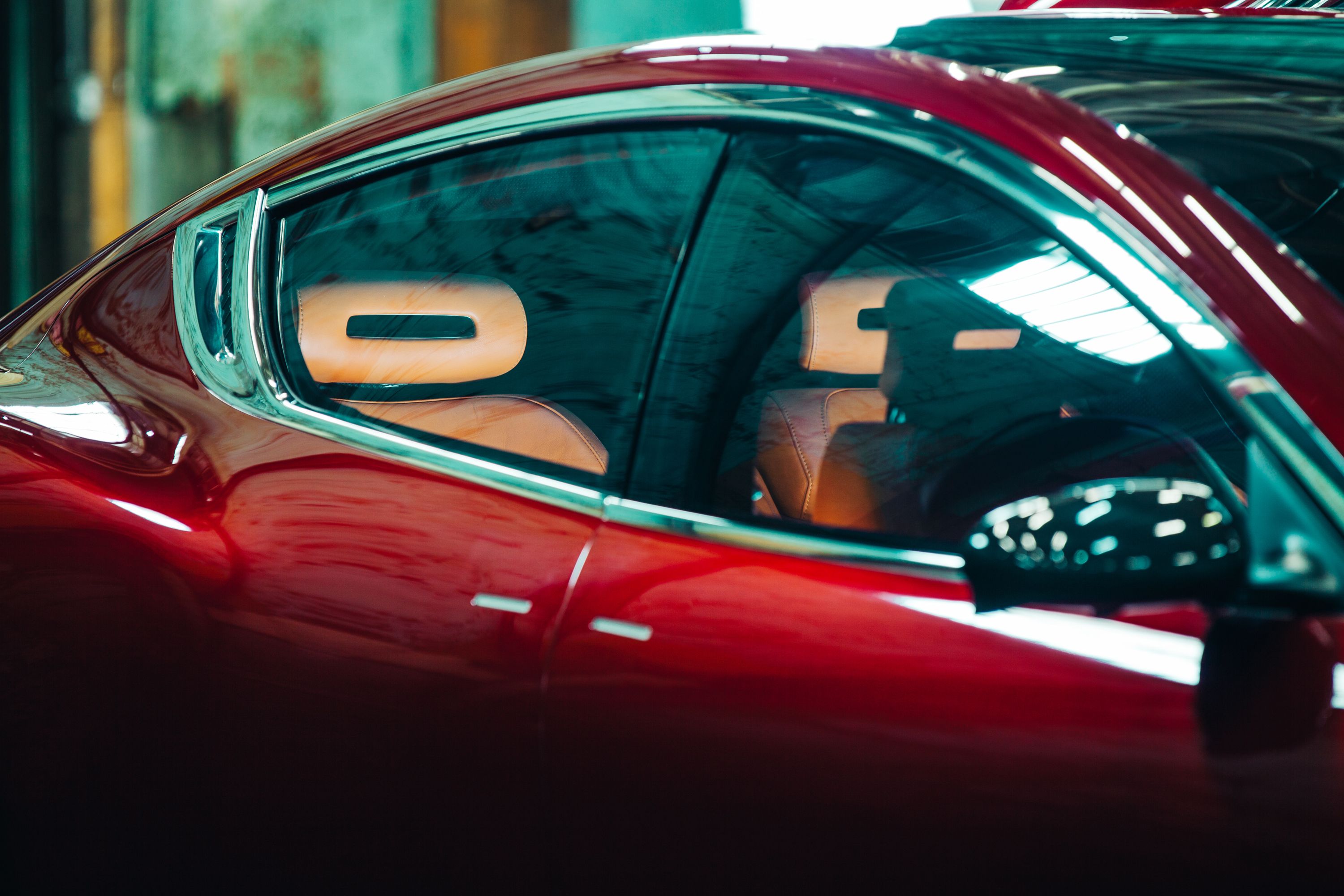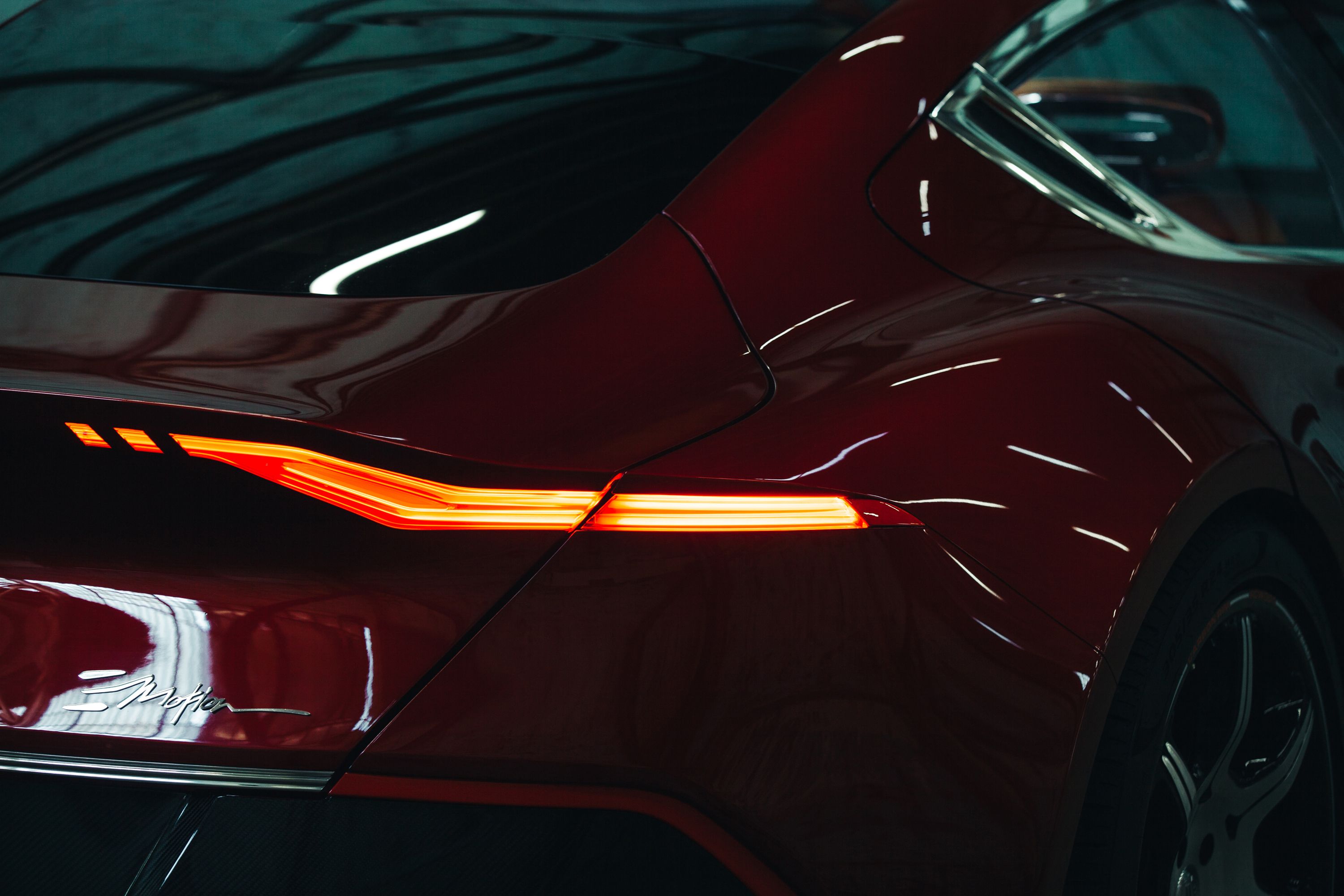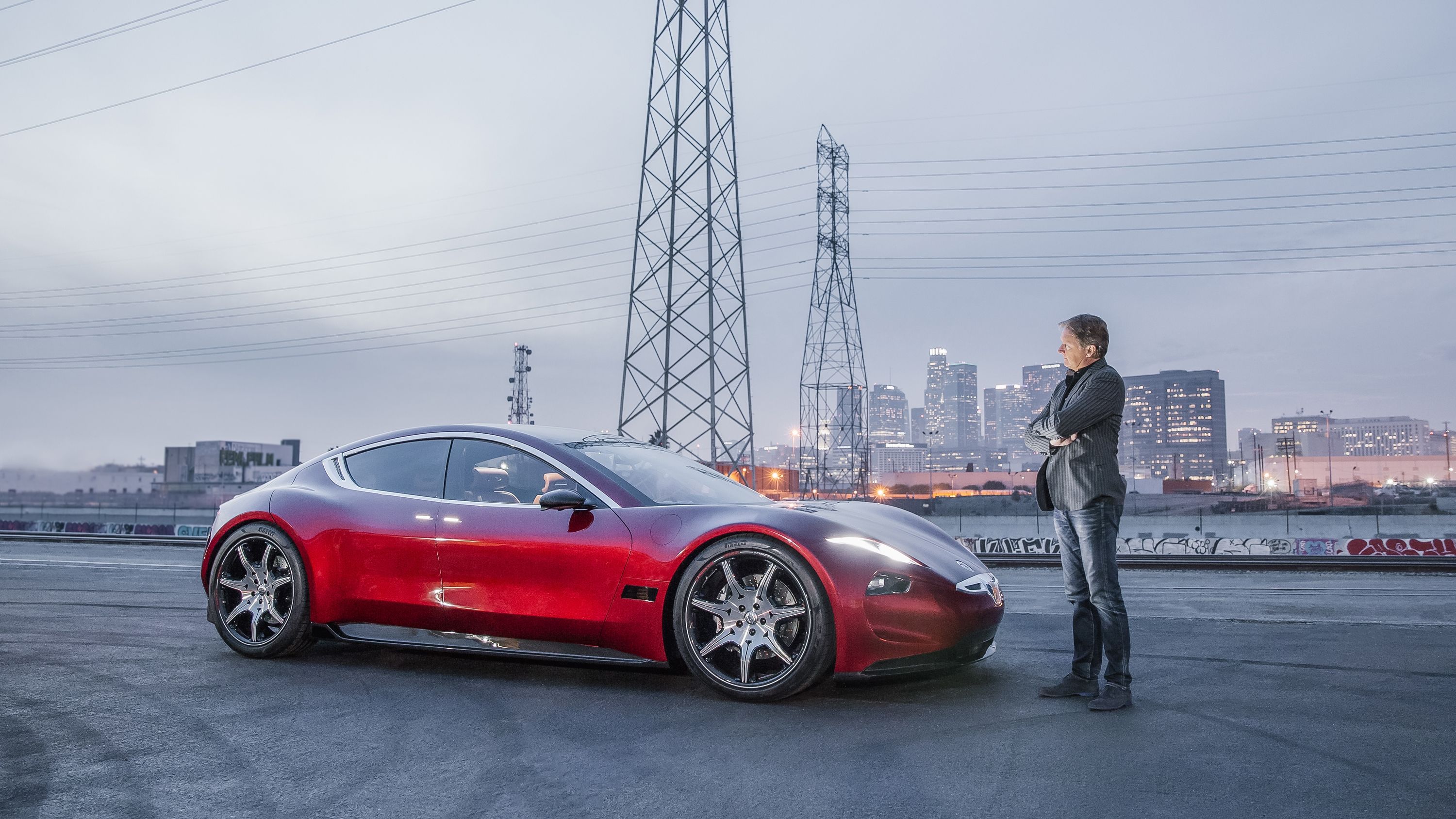If you’ve never heard the name Fisker before, let me give you a brief summary. The name comes from Henrik Fisker, a Danish-born entrepreneur and automotive designer currently residing in Los Angeles. Mr. Fisker worked his pen designing such show stoppers as the Aston Martin DB9, BMW Z8, Galpin-Fisker Mustang Rocket, and VLF Force 1 V10, among others. In 2007, he founded Fisker Automotive, consequently unveiling the Fisker Karma hybrid sports sedan in 2011. Long story short, the Karma didn’t pan out all that great, and Fisker resigned as chairman of the company that bore his name in 2013. But that was then, and now, Fisker has a new automotive startup, and even a new model to go with it. It's called the EMotion, and it's framed as a luxurious all-electric four-door with quick performance, groundbreaking solid-state battery technology, and upwards of 400 miles of range per charge, not to mention supercar good looks and Level 4 self-driving capability.
The new firm is called Fisker Inc., and the EMotion will be the company’s very first offering. But it’s not easy to break into the premium EV segment, especially when you consider all the other companies out there vying to do exactly the same. Pair that with growing competition from all the established makes currently doubling down on electric vehicles, and you’re left with odds of success akin to an ice cube’s chance in Hades.
That said, Fisker is no novice in this space. Sure, the Karma didn’t exactly pan out they way it was intended, but when consider Fisker’s vast industry connections and knowledge, Fisker Inc. might actually have a shot at making it. Yes, it’s an extremely bold endeavor, and yes, the claims getting tossed around the EMotion smell a lot like vaporware. But hey – if that guy who made PayPal can do it, why not Fisker?
Updated 1/9/2018: Fisker just debuted the EMotion at CES 2018! Read on for all the details and new images.
Continue reading to learn more about the Fisker EMotion.
2019 Fisker EMotion
- Make: Array
- Model: 2019 Fisker EMotion
- [do not use] Vehicle Model: Array
Exterior
As expected, the Emotion's design is reminiscent of past designs we've seen from Fisker. The automaker says the look is supposed to emphasize aerodynamics, undoubtedly focusing on reducing drag to keep the EV going fast and far. In a previous press release, the EMotion is described as possessing “a large curved windscreen pushed forward, diving into an extremely low bonnet,” with the front fascia hugging the ground in order to help it cut through the atmosphere. In back, there’s an “integrated spoiler and aggressive functional diffuser to aid aerodynamics.”
Fisker says the world of motorsport helped to inspire the various aero elements. Carbon fiber wings and spoilers are used front to back, while something called a Daylight Opening (er, you could just call it a window) is placed in the flanks with double-polished aluminum molding for the surround. The taillight housings get a thin design.
There's also some pretty crazy-looking butterfly doors that open up and outwards from the body. Owners can operate the doors via their smartphone, either opening or closing them as desired, while illuminated “Flush Touch Handles” provide a more hands on approach. The flush design also helps smooth out the exterior aero a tad.
Carbon fiber and aluminum structures underpin the overall design, while the 24-inch wheels can be optioned in carbon fiber and aluminum for added lightness. Fisker says the rollers were developed alongside the English-based performance wheel company Dymag, and manage to cut rotational mass by as much as 40 percent, which is ideal for both sportiness and all-electric range.
The exterior is also bristling with technology that adds to the list of driver’s aides and assists. For example, the front end gets an aluminum centerpiece with a LIDAR system, while the side mirrors house two visual cameras for a 360-degree panoramic view sent to the driver.
At first blush, I don’t think I’m alone in saying that this thing looks eerily similar to the Tesla Model 3. The short, stubby overhangs are part of it, as are the bulging fenders, but I think the biggest resemblance is seen in the roofline.
But you know what – I’m gonna give Fisker the benefit of the doubt on this one. The shape of the EMotion is supposed to emphasize aerodynamics, just like the Tesla, so in that sense, all Fisker is doing is working from an equation that describes fluid dynamics. And that’s okay, in my book.
So then – what about all those superfluous features that have absolutely nothing to do with drag coefficient? Because after all, Mr. Fisker is still a designer, right?
Let’s start in front, where we find a chunky, blunt nose that’s sliced and diced with all manner of vents, creases, and swoops. The outline is classic Fisker, with hints of the DB9 seen in the shape, while the VLF Force 1 V10 is a clear influence in the cutouts and intakes. High on the fenders, we find adaptive LED headlights.
Moving to the side, the drawn back lines in the nose continue into hugely flared wheel arches, which are filled to capacity with large, black wheels wrapped in ultra low-profile rubber. Blacked-out side skirts visually compress the body, squeezing and stretching it while keeping the underbody nice and flat.
In back, the overhang appears to be very short, with a fastback, almost hatch-like appearance for the tail. The flared-out rear fenders plump it all up and give it a nice stance, completing the sporty, aggressive look.
Finally, the exterior dimensions are measured at around 5 meters (196.85 inches) in length and 1 meter, 48 cm (58.27 inches) in height. The exterior color draped over the debut vehicle at CES is dubbed Sapphire Red.
Interior
Step into the EMotion's cabin space through those wild butterfly doors, and Fisker says you'll be met by the “luxury interior of the future.” The basics include space for four passengers thanks to a quartet of individual captain's chairs. Buyers can also get theirs optioned with a rear bench seat to bump the capacity up to five, as well as a 27-inch curved rear screen on the “Chauffeur Edition” for those owners who prefer to take a spot in back.
The interior is decked-out in “ultra-soft” leather, but Fisker will also offer a “vegan” option for those uninterested in parking their back sides on animal hide. In terms of design and customization, Fisker says it'll offer individually designed seats, with the details tailored to the customer's preferences. The colors in question in the latest round of pictures include Caramel and Midnight Black. There's also a four-zone electrically adjustable tinted roof with electrochromatic glass up top. Cool stuff.
So that covers the luxury half of the equation, but what about the future half? To give it all the requisite sci-fi vibes, the EMotion includes a trio of interior screens, including a large curved center screen up front and center. There's also inductive charging capability for smartphones, with up to four phones accommodated. Carbon fiber is used for the center console, and there's a variety of storage bins for passengers' various tablets and mobile devices.
Of course, the EMotion's most impressive interior convenience feature is the promise of Level 4 autonomy, which basically means this thing can drive itself. The magic tricks comes courtesy of five integrated Quanergy S3 lidar sensors, which are “Designed to provide the highest level of performance, reliability, durability and dependability required in safety-critical automotive situations.” Basically, these sensors allow the car is able to “perceive” its surroundings and drive itself, and if properly executed, would make the EMotion the most advanced car on the road. Thing is, we have yet to see the EMotion actually perform such a feat, so we'll reserve judgment until the systems prove themselves out in the real world.
My guess is Fisker will follow Telsa’s lead on this one, equipping all EMotion vehicles with the sensors and equipment needed to go fully autonomous, but waiting until the software is fully debugged and the regulators figure out what they’re doing before flipping the switch.
In terms of traditional crash safety, the EMotion promises to be on the level, with the frontal crash structure offering greater protection than that outlined by current standards.
Finally, the compact packaging of the electric powertrain should provide a good amount of interior room. Fisker has yet to divulge exact figures, but in the interim, here's the interior specs on the Tesla Model S for reference.
|
Tesla Model S |
|
|
Head room - Front/Rear |
38.8"/35.3" |
|
Leg room - Front/Rear |
42.7"/35.4" |
|
Shoulder room - Front/Rear |
57.7"/55.0" |
|
Hip room - Front/Rear |
55.0"/54.7" |
|
Seating capacity |
5 adults |
|
Total cargo volume |
31.6 cu ft |
Drivetrain
This is where things get really interesting. Fisker says the EMotion is equipped with a “newly developed electric power train layout,” offering more than 400 miles of range per charge, AWD grip, and a top speed of 161 mph. The AWD and top speed are both impressive, but the really amazing number is the 400 miles per charge. Considering the current crop of EVs can't even touch that sort of distance, one must wonder what Fisker has up its sleeves – especially when you hear talk of recharge times on par or even faster than filling a gas tank with dino juice.
Initially, Fisker said it would offer the EMotion with a high-tech graphene battery, but later shelved the idea in favor of traditional lithium-ion units. Now, though, the company has announced a new breakthrough in solid-state battery tech, and so far, the claims it's making are astounding, to say the least.
From the off, solid-state batteries promise an enormous leap forward for electric vehicles, and indeed anything that's battery-powered (laptops, smartphones, etc.). Fisker says the tech offers two-and-a-half times the energy density of a traditional lithium-ion unit, plus head-spinning recharge times. For EV owners, that means huge range and almost no downtime at the plugs, both make-or-break specs for a modern electric vehicle.
The solid-state technology was developed by Fisker's in-house team of scientists, and the company currently has a variety of patents pending on it, saying the “Breakthrough technology will enable dramatically longer ranges of more than 500 miles on a single charge and charging times as low as one minute.”
In all honesty, it seems a little ambitious to us. In theory, those are numbers that solid-state batteries should be able to offer, but we have to question whether Fisker actually has any data to back the claim. Sure, it's a definite possibility for the future, but will it be a reality when the EMotion hits the road?
For now, the answer is now, as Fisker says the tech won't be production ready for automotive applications until 2020. However, the company also claims applications for smartphones and electronics will be ready much earlier, “possibly in 2018.” What's more, visitors to the Fisker booth at CES 2018 are offered a glimpse of a working solid-state battery that's about half the size of a traditional cell phone battery. However, with the solid-state battery still in development, the EMotion will initially launch with a lithium-ion battery from LG Chem.
But beyond the claims of this as-of-yet unproven technology, what will the EMotion need to compete?
Well, 400 miles per charge is a fantastic place to start. I’d add to that dual-motor motivation for AWD grip and advanced torque vectoring handling, plus at least 500 horsepower and 700 pound-feet of torque to run against Tesla’s top-trim P90D Model S. A sprint to 60 mph in three seconds or less should be the benchmark for acceleration.
For the sake of comparison, we’ve included a breakdown of the specs on the Tesla P90D Model S (Ludicrous mode activated) in the table below.
|
Tesla P90D Model S (Ludicrous mode) |
|
|
Range |
270 miles |
|
Horsepower |
762 HP |
|
Torque |
713 LB-FT |
|
0 to 60 mph |
2.8 seconds |
|
Top Speed |
155 mph |
Chassis And Handling
In addition to advanced torque vectoring, we're assuming the EMotion mounts its all-electric powerplant in such a way as to maximize handling prowess, which means low and in the center of the vehicle. What's more, Fisker says the vehicle will use a composite structure that integrates carbon fiber and aluminum, which should help shave weight.
However, EV’s have traditionally been quite heavy compared to equivalent ICE-powered vehicles, so we're very curious to see how the composite structure helps to shed the pounds.
Finally, the EMotion utilizes low rolling resistance rubber from Pirelli, which is great for range, but not so great for corner-carving. Once again, we'll see what happens when this thing hits a track, but we wouldn't get our hopes up for anything amazing.
Prices
Fisker says the EMotion will be “produced in an existing facility in the USA,” and according to Read the full review on the [2017 Tesla Model S.,->http://www.autocar.co.uk/car-news/new-cars/fisker-emotion-electric-car-will-have-400-mile-range VLF will be responsible for assembly. A final assembly location will be announced later this year.
In case you were unaware, VLF Automotive is the collaborative effort of ex-Boeing exec Gilbert Villareal, former General Motors exec Bob Lutz, and Henrik Fisker, with previous offerings including the Force 1 V10 and Destino V8.
Initial deliveries with a traditional lithium-ion power source are set to arrive by the end of 2019. Final pricing slots in at $129,000. Fisker is currently accepting reservations at $2,000 a pop.
The EMotion will be sold through Fisker’s website and “forthcoming experience centers.” Fisker also says it’s partnering with The Hybrid Shop, an electric and hybrid-focused service company, to keep customer vehicles in proper working order with a “one-of-a-kind, white glove concierge service, providing Fisker owners a seamless day ‘free of interruption’ for routine maintenance and servicing.”
Read the full speculative review 2020 Porsche Mission E0
Fisker eMotion Debuts with 24-inch Wheels, 400-Mile Range, and Level 4 Autonomous Capability1
Clearly, this is the target the EMotion is aiming at. The Model S completely upended the world of all-electric passenger cars, and it’s now the standard by which all other potential competitors in this space are judged. Just don’t think Tesla will take a challenge from Fisker sitting down – odds are we'll be seeing lots of innovation and development from the California automaker before the EMotion finally hits the road.
Read more CES news.
Read more Fisker news.1
Sure, this Porsche is only a concept, but again, we're still quite a ways away from seeing the EMotion arrive in driveways. The Mission E is the Stuttgart automaker’s vision of a four-door sports car without the howl of some internal combustion engine, offering a 0-to-60 mph time in the low three-second range, AWD cornering ability, 600 horses, and over 300 miles of range per charge.
Read the full speculative review 2020 Porsche Mission E
Conclusion
Way back in 2011, I got a chance to drive the original Karma, and I was immensely impressed. It was an innovative take on the whole EV game, but unfortunately, the Karma turned out to be far too complicated for its own good. The ideas behind it were smart, the design a definite head turner, but from all the promises and hype emerged a car that was too expensive and too unreliable to really make a dent in the hybrid market. The fact that models were constantly burning to the ground didn’t help, either.
Now, it looks like there’s a second chance for Fisker to make right on the mistakes of the ill-fated Karma, and you won’t find him pulling any punches. Although it isn't using roof-mounted solar cells and a hybrid powertrain, the EMotion still looks to be quite complicated, especially when you consider promises of Level 4 autonomous capability and solid-state battery packs. That said, EV technology has progressed massively in the last five years, so maybe, just maybe, this thing could be a win.
If success is in the cards, expect a whole lot more from Fisker Inc. The startup is taking the same top-down approach as Tesla, offering the EMotion as a low-volume, high-cost model at the outset, which will help fund a follow-up that’s higher volume and lower cost. In an interview with Read the full review on the [2017 Tesla Model S.,->http://www.autocar.co.uk/car-news/new-cars/fisker-emotion-electric-car-will-have-400-mile-range Fisker said the second car will be built by an unnamed “established car maker,” and it’ll use a modular EV platform, which hints at even more possible future models – like a Model 3 competitor, for example.
Revolutionary battery technology? Up to 400 miles on electrons alone? Fully autonomous driving systems? Stealing sales from the Model S? Sounds like Fisker is swinging for the fences. Here’s to hoping he doesn’t whiff.
References
Fisker eMotion Debuts with 24-inch Wheels, 400-Mile Range, and Level 4 Autonomous Capability
Read more CES news.
Read more Fisker news.


